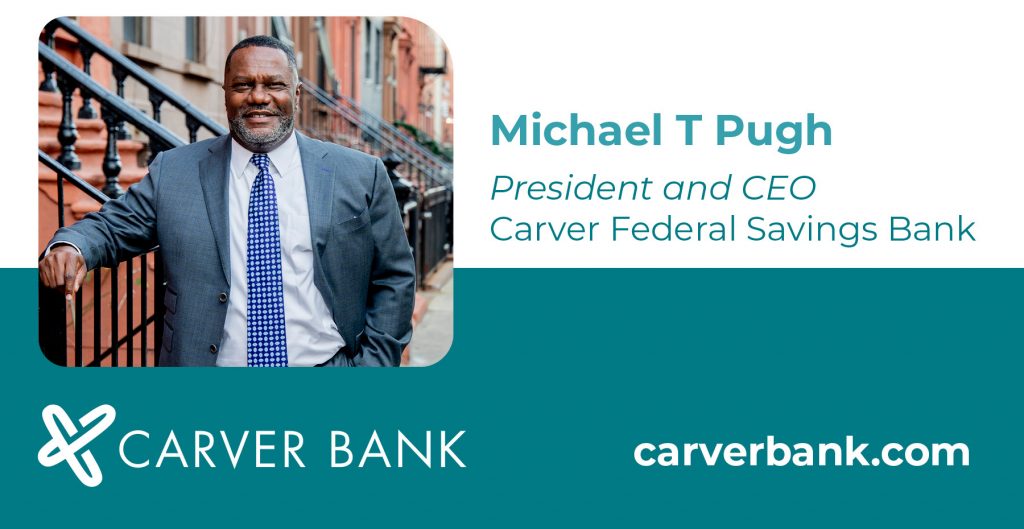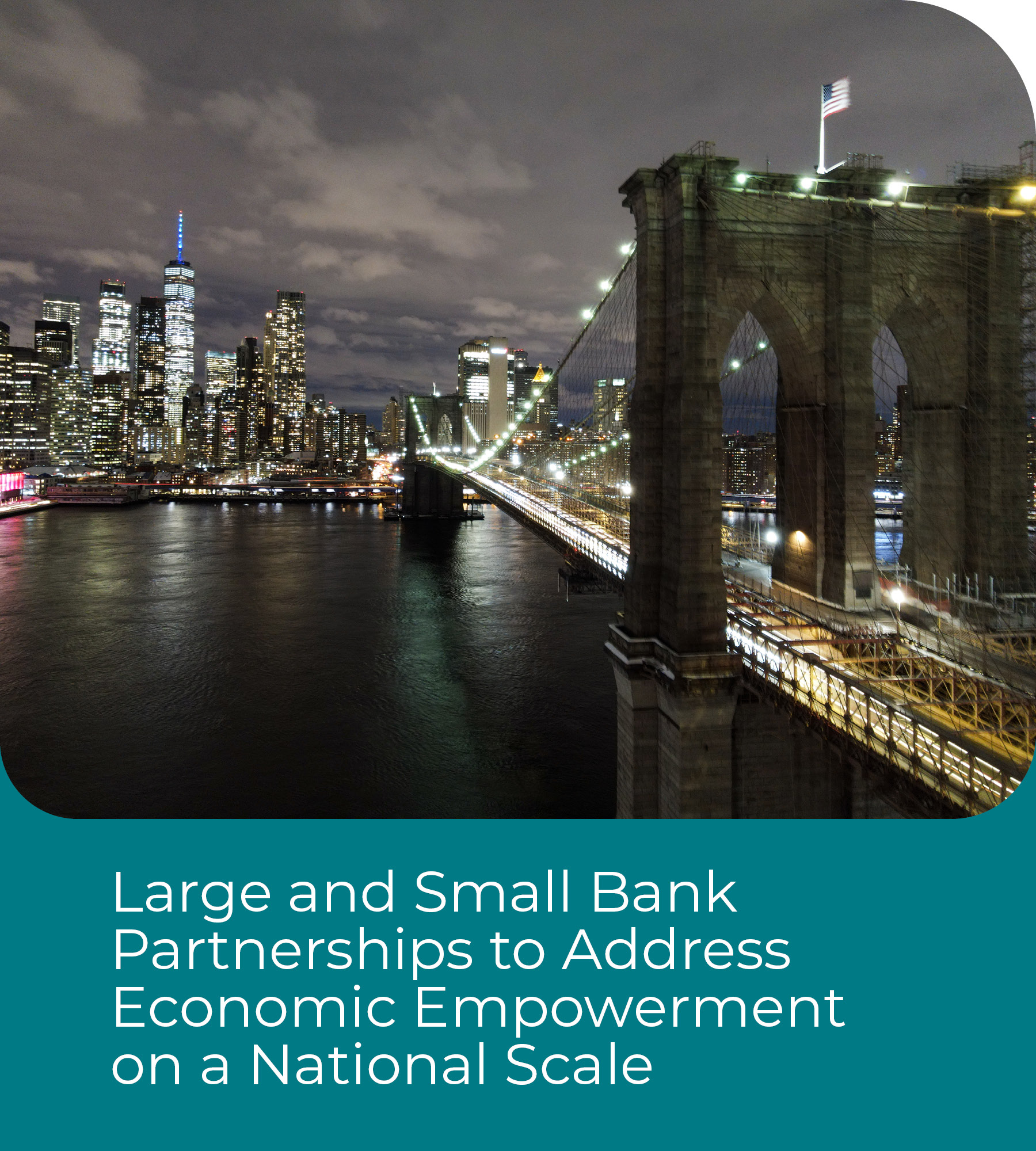Language
You can read the magazine in one of the following languages
Shared partnerships with Super-Regional and Global financial institutions enable Community Development Banks such as Carver Federal Savings Bank to have a greater reach and impact beyond its traditional capacity. What’s essential here is the “shared” aspect of these collaborations. Carver, for instance, has been fortunate to partner with JPMorgan Chase and numerous like-minded organizations on mutually beneficial initiatives. And even though Carver has a branch just a few doors away from Chase Bank on 125th Street in Harlem, NY, we are not in direct competition. At a recent joint Building Black Wealth event at Chase Bank, one participant commented that the “two institutions do not compete but help complete each other”.

Shared revenue opportunities such as loan participations with Valley National Bank enable Carver to partake in larger loans to our core market demographic of minority and women business enterprises (MWBEs). Historically, we couldn’t underwrite major size loans over $10 million because they would exceed our statutory lending limit. With our thriving partnership in place, Valley National Bank can finance a portion of these larger loans via its balance sheet. The partnership brings the loans in line with our regulatory requirements. It reduces our risk and exposure levels while allowing Carver to review the applicants’ credit worthiness and service the customers we know best in a community we have continuously served since 1948.
In the past, Carver would need to turn down loans of this magnitude, even though we were the New York City bank best suited to evaluate the applicant’s creditworthiness and service these loans. Our partnership with Valley National Bank undoubtedly exemplifies a best-in-class shared partnership. It allows a larger financial institution to connect with underserved communities and make a measurable impact leveraging the historical presence that an institution like Carver has made over the past several decades reinvesting approximately $0.80 of each deposited dollar back into the community through competitively priced loans.
Most major commercial banks have larger headcounts than your typical community development financial institution (CDFI), which aim to strike the proper balance between margin and mission. Large commercial banks have the opportunity to lend their technical expertise to CDFIs, which are deeply connected to the communities they serve and help foster economic empowerment. Capital One demonstrates an understanding of community banking priorities by sharing best practices with Carver for customer data analytics centered on profitability, including how we open new accounts at the branch level to maximize our efficiency and the customer experience.
We have also been able to leverage the resources of Chase Bank’s talent pool and technology to provide greater access and convenience to our customers. Our joint work has enabled us to optimize loan structures and reach a broader network of customers through a shared ATM network of 84,000 machines nationwide. Very few community banks our size can offer such a value proposition to their customers.

MWBEs are the engines of economic development in communities of color. While we are seeing some progress nationally, women of color continue to struggle disproportionally to secure capital to start or expand their businesses.
Carver’s Tier-1 and Tier-2 capital ratios continue to be strong. We’ve raised more than $38.5 million in capital over the company’s last two fiscal years. Part of the capital raised came from leading financial institutions and other organizations equally committed to economic empowerment in communities of color.
These and prior capital raises helped Carver achieve a historic small business gross loan production of $200 million for its most recent fiscal year. The loans, primarily to small businesses and landlords, should help strengthen communities in Greater New York City recovering from the pandemic. Given the vital role that minority depository institutions (MDIs) serve in the community across the US, I believe that large and small bank partnerships are mutually beneficial initiatives that help MDIs drive economic empowerment on a national scale. Together, there is a tremendous opportunity for financial institutions to systemically improve our nation’s gross domestic product per capita, address the wealth gap for communities of color, and prepare for economic uncertainty in a post-pandemic environment.
I hope that Carver’s shared partnerships can inspire large financial institutions and serve as a template for expanding their work with other CDFIs and MDIs across the US.
We invite you to learn more about Carver Federal Savings Bank by visiting our website and reading the recent cover feature on the bank in The CEO Magazine: Banking on Community.

